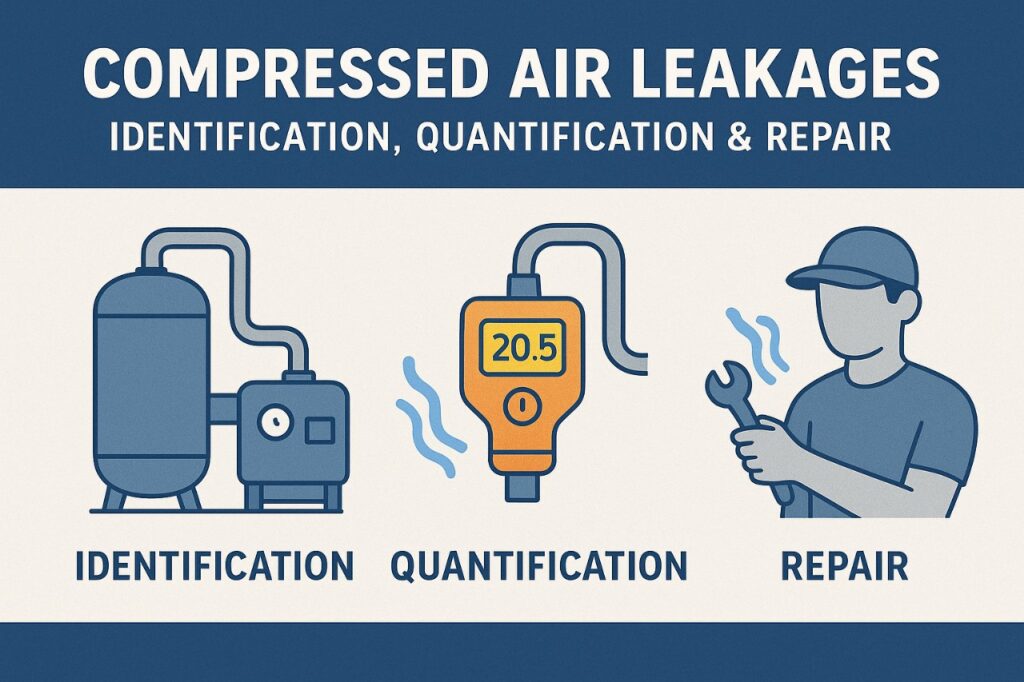Compressed Air Leakages: Identification, Quantification & Repair
Compressed air is often called the “fourth utility” in industries, yet hidden leakages quietly waste energy, inflate costs, and increase carbon emissions. Research shows that 20–30% of compressed air in a typical plant is lost through leaks. This not only drives up electricity bills but also forces compressors to work harder, leading to higher greenhouse gas emissions and unnecessary strain on the environment.
Identification is the first step. While large leaks may be audible, most are silent and require ultrasonic leak detectors to accurately locate them. These advanced tools allow engineers to pinpoint leaks without disrupting operations.
Once identified, quantification ensures clarity on the actual losses. By measuring flow rates, compressor cycles, and system pressure, industries can determine how much money and energy are being wasted, and prioritize the most critical repairs.
Repairing leaks—whether by tightening fittings, replacing seals, or redesigning piping—restores efficiency and reduces power demand. Lower energy consumption translates directly into fewer CO₂ emissions, helping industries shrink their carbon footprint. Over time, this makes compressed air optimization not just a cost-saving measure but also a major step toward long-term sustainability and meeting corporate ESG commitments.
This is where AirAudit comes in. Their expertise in Leakage Detection, Flow Monitoring, Energy Audits, and Piping Analysis ensures measurable energy savings while promoting greener operations.
Don’t let air leaks drain your profits—or the planet. Book an AirAudit survey today and move towards efficiency, savings, and sustainability.


